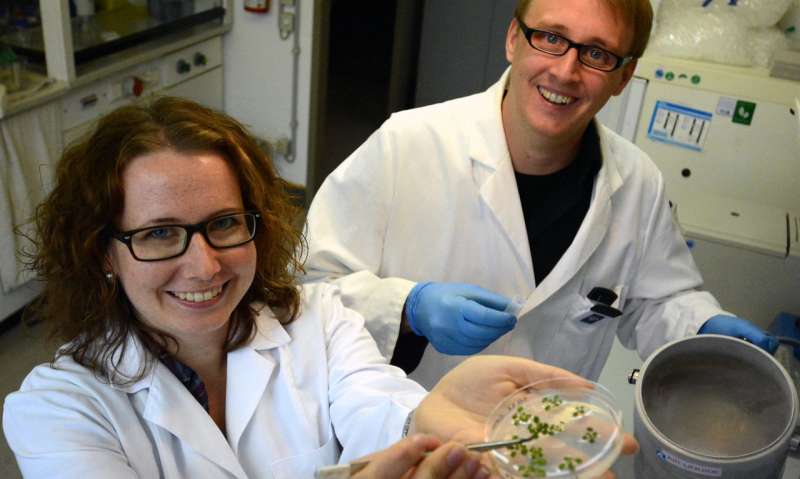Biologists research the mechanism of an auxiliary circadian clock

In December, the Nobel Prize for Medicine and Physiology will be awarded for the identification of genes that control the inner clock in fruit flies. Biochemist Professor Dr. Dorothee Staiger of Bielefeld University has been researching the inner clocks of plants for 20 years. Her team has now published a new study in the research journal Genome Biology reporting, among other things, that in addition to the inner clock, there is also a protein acting as an "auxiliary clock" ensuring that recurring routines take place in the cells.
"The inner clock ensures that a plant adapts its metabolism to the environment in good time, thus enabling it to directly use the first rays of the sun for photosynthesis, for example, and produce carbohydrates," says Dorothee Staiger.
As the Nobel Prize winners have shown, individual genes in the genomes of plants, animals and humans control the inner clock. Messenger RNAs are produced on these genes at a certain time of day. These molecules start the formation of clock proteins, which in turn reach their highest concentration at a fixed time of day.
Clock proteins switch their own genes on and off at 24-hour intervals. They are therefore responsible for their own rhythm. The clock proteins also ensure that other genes in the cell are active at the best possible time of day. They initiate different processes at specific times, including opening flowers and defending against pathogens. Another example is the sleep-wake rhythm in humans.
Now, Staiger and her team have examined another part of the inner clock in detail, using the model plant Arabidopsis thaliana (thale cress). During the process, they found an "auxiliary clock," a protein called AtGRP7. "Interestingly, the AtGRP7 protein behaves almost like a clock protein—it influences its own 24-hour rhythm," says Dr. Tino Köster. "As a result, the amount of AtGRP7 protein rises during the day and falls again at night." Köster and his colleague Katja Meyer are the lead authors of the study.
According to the researchers, this is caused by a daily recurring cycle that can be divided into three phases. "In the first phase, the protein binds to its own messenger RNA and breaks it down at night. In the second phase, the reduction in messenger RNA causes less of the AtGRP7 protein to be formed. In the third phase, the diminished amount of protein ensures that new messenger RNA can form again. "This marks the beginning of the cycle all over again," says Katja Meyer.
A new finding of the study is that the protein not only binds to its own messenger RNA, but is also capable of blocking a lot of other messenger RNAs in the cell. Staiger's team and their partners at the University Halle-Wittenberg had to find all the messenger RNAs in the cells of the plants on which the protein is located. In addition, the biologists subjected the plant to irradiation with ultraviolet light for about two minutes. This results in the messenger RNAs bonding firmly with the protein. They then isolated the protein and identified the RNAs bound to it by means of high-throughput sequencing. This new method is called iCLIP. It was originally developed for animal cell cultures. "For the new study, we were the world's first research team to apply the iCLIP method to whole plants," says Dorothee Staiger.
In a further step, the researchers examined what the protein does with the bound messenger RNAs in the cell. For the analysis, the researchers artificially increased the amount of the AtGRP7 protein in several plants and examined the effects of this on the messenger RNAs. "We were able to show that an increased amount of AtGRP7 can disrupt the rhythm of some messenger RNAs. This means AtGRP7 acts as an auxiliary clock, mediating between the inner clock and the messenger RNAs dependent on the time of day," says Katja Meyer.
The study was funded by the German Research Foundation (DFG) and serves basic research. "Our aim is to understand the basic interrelationships in nature," says Staiger. "In this case, we learn how the inner clock ensures that further smaller clocks are set in motion. And we learn which strategies plants use to adapt to changing environmental conditions."
More information: Katja Meyer et al, Adaptation of iCLIP to plants determines the binding landscape of the clock-regulated RNA-binding protein AtGRP7, Genome Biology (2017). DOI: 10.1186/s13059-017-1332-x


















